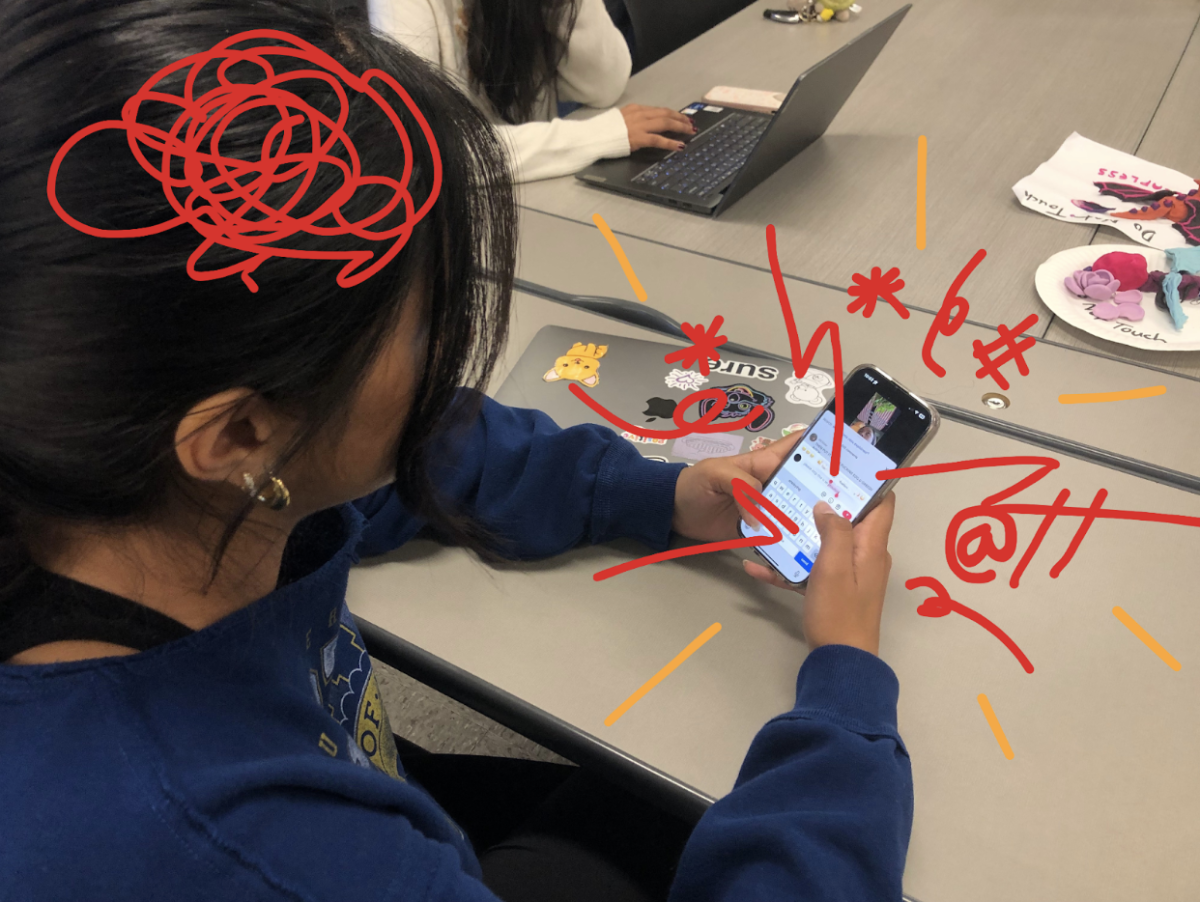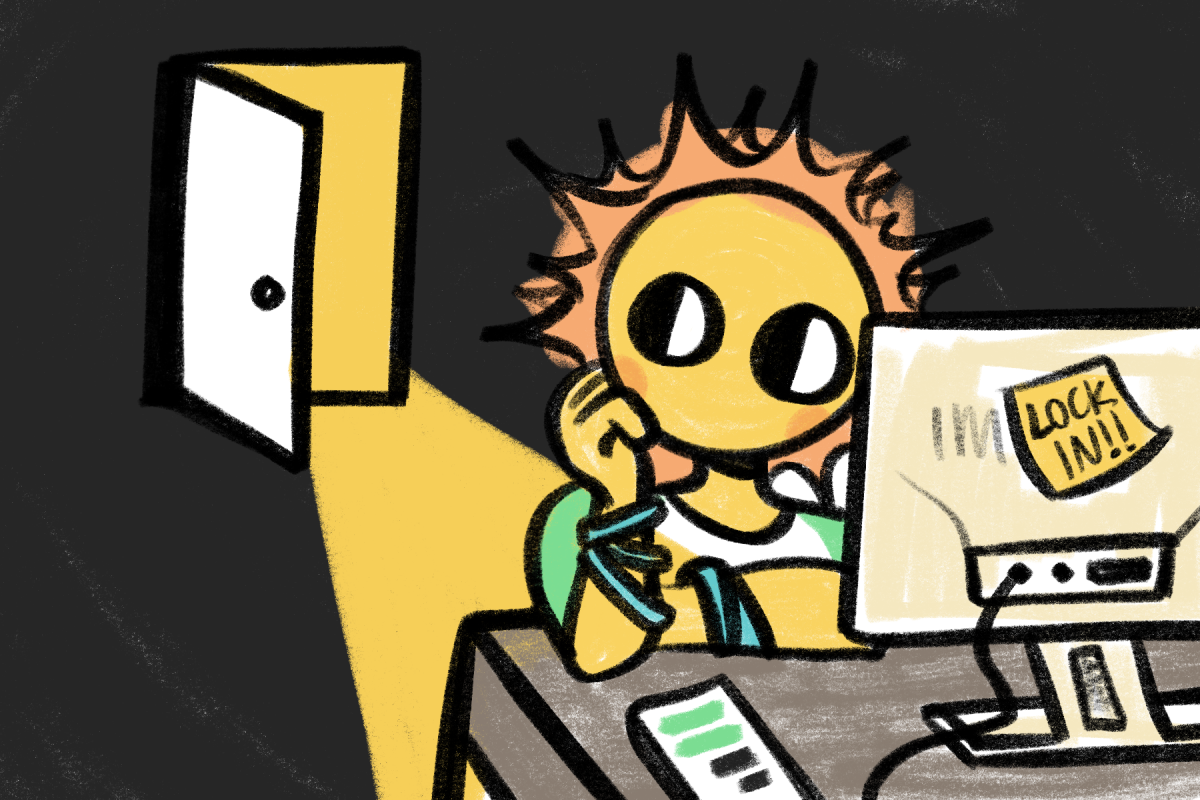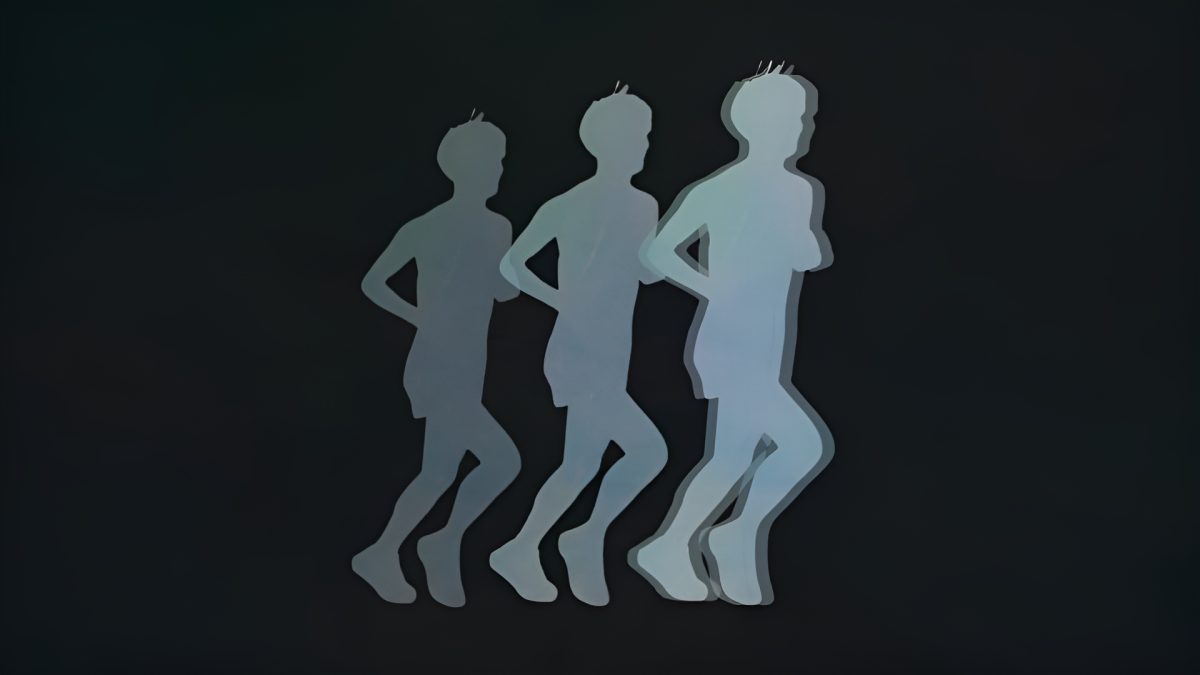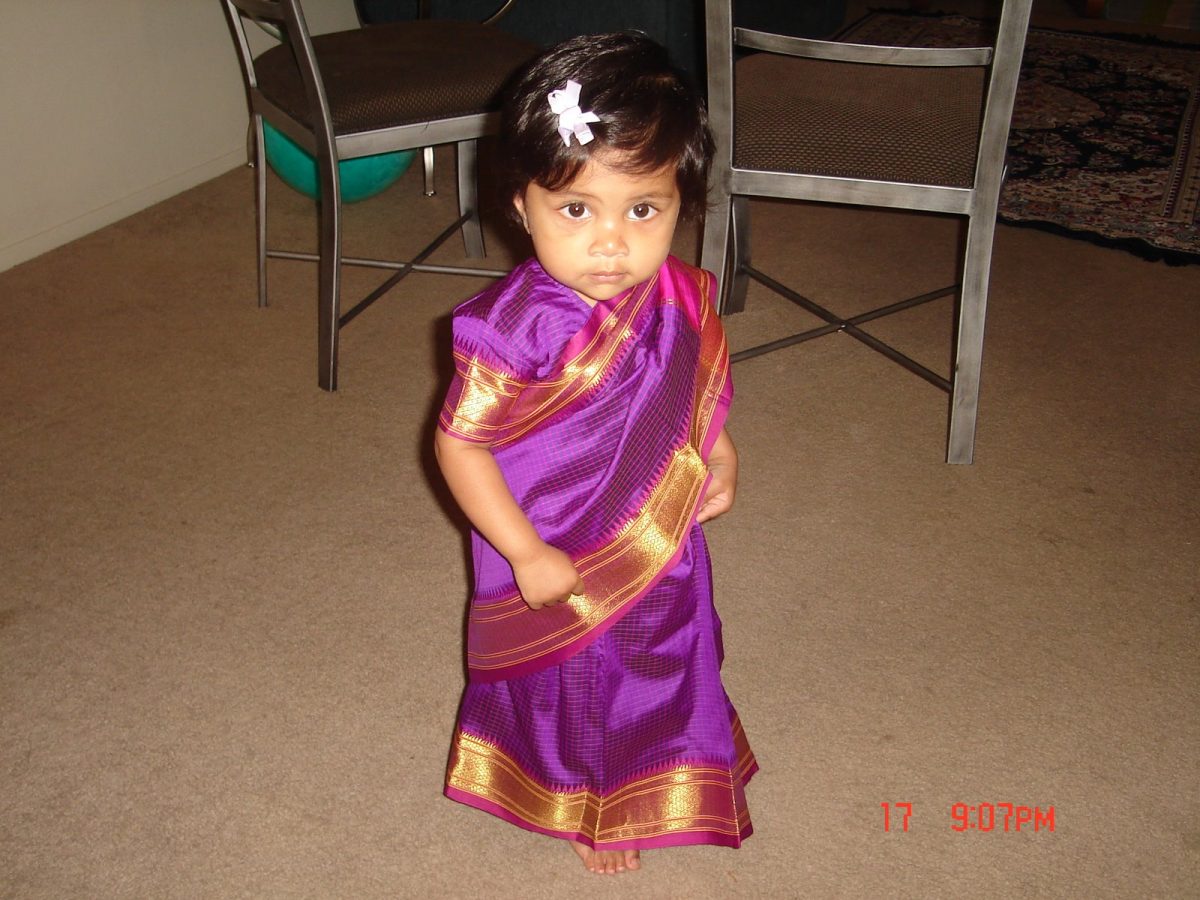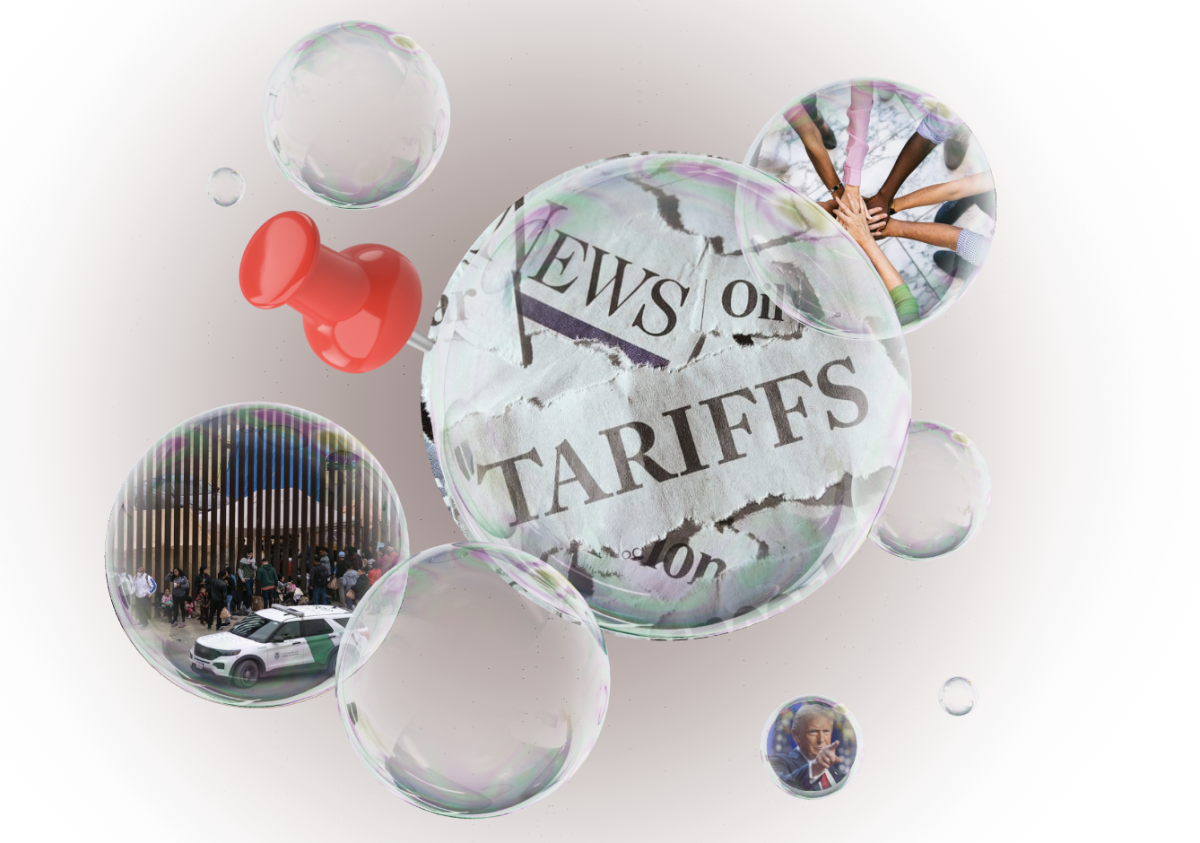“POV: when ur at a cafe and everyone is staring at you filming a tiktok cause ur so pretty”
This is a caption one may find under a rage bait video. The glaring narcissism and lack of social awareness on the part of the creator that people are staring at the creator not for their looks but for their intrusive filming in a public space immediately triggers a colorful array of negative reactions. This scenario is but one example of rage bait, in which an online influencer says or does something so ridiculous, atrocious or absolutely rage-inducing that you have to pause what you are doing to react. That is the desired effect of rage bait: luring viewers into interacting negatively with a creator’s content in order to maximize engagement — and profit. While it may appear harmless to interact with such content on the surface, rage bait actively promotes toxicity by commodifying negativity and manipulating users for profit while overlooking its unseen impact on viewers’ mental health.
Since the monetization of content, content creators have pulled every trick in the book to catch people’s attention and max out the statistics that determine their paycheck: views, sponsorships and marketing. The nature behind these statistics is meaningless to the platforms, such as TikTok and Instagram, whose only goal is to curate an algorithm that will keep users scrolling. They pay creators as long as they are drawing people and advertising companies in, turning the saying “any publicity is good publicity” into digital reality.
Early on, this marketing mindset manifested as rage bait’s predecessor, clickbait — content designed to make readers want to click on it, such as a video or hyperlink. However, while an overexaggerated title may be disappointing to viewers when they view the actual content, it is still an advertisement of interesting content that may actually deliver a version of what it marketed. Rage bait, on the other hand, shrugs off the fear of backlash, humiliation or the online equivalent of being “booed off the stage” to create rage-inducing content, with no relationship of trust or promise of quality built with its audience, for the pure purpose of encouraging hate to boost profit. The blatant manipulation of viewers undermines the meaningfulness and integrity of online interactions with content, conning rather than earning engagement.
Winta Zesu, a popular content creator on TikTok and Instagram, has built her platform around rage bait to attract users to comment on her posts. Her content depicts the life of a girl in New York City, and she stages interactions in public spaces where she is told to leave because she is “too pretty” or where she is forced to pay an absurd amount of money. Many of her comments are negative, with people commenting things like “you’re not the prettiest girl” or “please bring yourself down, you have too much confidence.” However, while users exert energy typing their impassioned opinions, Zesu profits from their hate, having earned almost $150K in a year from her online platform.
The real-world consequences of rage bait seem to be overlooked in the chase for money. These issues go beyond just the online community, but rather extend to the real world. Rage bait often reinforces negative stereotypes, such as the term, “pick me,” a derogatory term for women who cater their interests and behavior to appeal to men and put down other women. Caitlin Erin O’Neil, another content creator on Instagram, posts content that is considered to be “pick me,” leading her to receive a lot of negative attention. Her content reinforces this stereotype for women, villainizing harmless characteristics like not wearing makeup and discouraging people who have similar characteristics from expressing themselves to avoid being compared to a “pick me” character.
In a similar way, rage bait content can also normalize offensive behavior, language and stereotypes. As users grow accustomed to rage bait creators throwing around such content casually or ironically for profit, it can subliminally influence the way this morally questionable behavior is perceived. For example, some rage bait may depict white people threatening to say the N-word, but it is portrayed in a humorous way which takes away from the racist context, messaging to the audience that it’s ok to say offensive things as long as you “aren’t serious.”
While the claim can be made that audiences ultimately choose to interact with the post, and it is by their own desire to consume this media that rage bait gets so popular, choice and desire can be manipulated. In fact, Dr. William Brady, an assistant professor at Northwestern University’s Kellogg School of Management, found that negative content has a strong grip on humans, especially when we see it on our social media platforms. People tend to engage more with triggering or negative content due to their reactions to what is being shown and consequently boost its visibility to social media users. Once an individual is caught in this cycle, it becomes harder to disengage from it, especially when social media platforms are designed to keep them hooked.
Other arguments may point out that posting content online, regardless of whether it is rage bait or not, is a form of free speech, and restricting it would be a violation of rights. While it is true that in most cases rage bait would be a protected form of speech, rage baiting thrives on exploiting human emotions and reactions, and by turning negative viewer reactions into a commodity, the toxicity of social media is perpetuated. In fact, somewhat unsurprisingly, continuous exposure to rage bait is shown to increase stress, anxiety and negative emotions in general. Thus, while it should not necessarily be restricted, we must remain mindful of how we interact with it.
At MVHS, many of us are guilty of doom-scrolling and interacting with rage bait content. We must be aware that issues like desensitization to real issues and the psychological impacts extend to us as well, affecting our daily lives and attitudes. Considering the strong academic and social pressure we already face from school alone, additional triggers like those from rage bait only build onto our existing stress and anxiety, and could promote a more negative approach to our already stressful lives.
This begs the question, how can we, as a community, limit rage bait’s manipulation of us? Although appealing, restriction is not necessarily the best or most effective approach to combat the negative impact of rage bait. Instead, as social media content consumers, we can take steps to actively discourage ourselves and our algorithms from interacting with rage bait. We can avoid commenting, liking or sharing rage bait and choose to engage with the content we would like to see instead. We can block or unfollow rage bait creators, report harmful posts, monitor our screen time, educate those around us about the issues with rage bait and spread awareness in our community. In the end, rage bait is yet another example to push us, as young social media users, to be aware of what we engage with online, and to ensure we are playing an active role in curating a safe space for ourselves and our best interests in our online lives.




